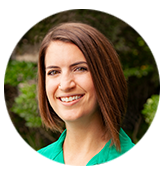
Designing a high-performance lens is only one part of an optical designer's job. The more elusive challenge is often in the tolerancing of that lens and in linking toleranced performance to as-built performance.
Join us for a 45 minute webinar presented by design and manufacturing experts Katie Schwertz and Shelby Ament to learn about the challenges and best practices of designing manufacturable lens assemblies. This webinar will provide background information on how a multi-element lens assembly is manufactured and assembled while providing insights on details that should be taken into consideration in the design and tolerancing stages. Taking extra time early on to consider these details can improve performance and yield, while reducing costs in the long run.
Throughout this webinar, participants will gain insight on the following topics:
 Katie Schwertz - Senior Design Engineer, Edmund Optics
Katie Schwertz - Senior Design Engineer, Edmund Optics
Katie Schwertz is a Senior Design Engineer in Edmund Optics' Tucson, Arizona, USA office. She is responsible for executing optical and optomechanical designs, tolerancing, analyses, and prototype evaluations for both internal development and external customers. Katie received her MS in Optical Sciences from University of Arizona, College of Optical Sciences and a BS in Optics from University of Rochester, Institute of Optics. She is a co-author of the SPIE Field Guide to Optomechanical Design and Analysis.
 Shelby Ament
Shelby Ament
Shelby Ament was formerly an Optical Research Engineer at Edmund Optics in the Barrington, New Jersey, USA, office. She was responsible for developing new optical metrology and fabrication techniques to improve Edmund Optics’ manufacturing capabilities. Shelby received her PhD in Optical Science from the College of Optical Sciences at the University of Arizona and bachelor’s degree in Physics from DePauw University. Her dissertation involved design and fabrication of holograms to improve performance of solar energy systems.
or view regional numbers
QUOTE TOOL
enter stock numbers to begin
Copyright 2023 | Edmund Optics, Ltd Unit 1, Opus Avenue, Nether Poppleton, York, YO26 6BL, UK
California Consumer Privacy Acts (CCPA): Do Not Sell or Share My Personal Information
California Transparency in Supply Chains Act
The FUTURE Depends On Optics®